Hurricanes Have No Place To Hide, Thanks To Better Satellite Forecasts
Hurricanes Have No Place to Hide, Thanks to Better Satellite Forecasts

If you’ve ever looked at a hurricane forecast, you’re probably familiar with “cones of uncertainty,” the funnel-shaped maps showing a hurricane’s predicted path. Thirty years ago, a hurricane forecast five days before it made landfall might have a cone of uncertainty covering most of the East Coast. The result? A great deal of uncertainty about who should evacuate, where it was safe to go, and where to station emergency responders and their equipment.

Over the years, hurricane forecasters have succeeded in shrinking the cone of uncertainty for hurricane tracks, with the help of data from satellites. Polar-orbiting satellites, which fly nearly directly above the North and South Poles, are especially important in helping cut down on forecast error.

The orbiting electronic eyeballs key to these improvements: the Joint Polar Satellite System (JPSS) fleet. A collaborative effort between NOAA and NASA, the satellites circle Earth, taking crucial measurements that inform the global, regional and specialized forecast models that have been so critical to hurricane track forecasts.

The forecast successes keep rolling in. From Hurricanes Harvey, Irma and Maria in 2017 through Hurricanes Florence and Michael in 2018, improved forecasts helped manage coastlines, which translated into countless lives and property saved. In September 2018, with the help of this data, forecasters knew a week ahead of time where and when Hurricane Florence would hit. Early warnings were precise enough that emergency planners could order evacuations in time — with minimal road clogging. The evacuations that did not have to take place, where residents remained safe from the hurricane’s fury, were equally valuable.

The satellite benefits come even after the storms make landfall. Using satellite data, scientists and forecasters monitor flooding and even power outages. Satellite imagery helped track power outages in Puerto Rico after Hurricane Maria and in the Key West area after Hurricane Irma, which gave relief workers information about where the power grid was restored – and which regions still lacked electricity.

Flood maps showed the huge extent of flooding from Hurricane Harvey and were used for weeks after the storm to monitor changes and speed up recovery decisions and the deployment of aid and relief teams.

As the 2019 Atlantic hurricane season kicks off, the JPSS satellites, NOAA-20 and Suomi-NPP, are ready to track hurricanes and tropical cyclones as they form, intensify and travel across the ocean – our eyes in the sky for severe storms.
For more about JPSS, follow @JPSSProgram on Twitter and facebook.com/JPSS.Program, or @NOAASatellites on Twitter and facebook.com/NOAASatellites.
Make sure to follow us on Tumblr for your regular dose of space: http://nasa.tumblr.com.
More Posts from Ocrim1967 and Others

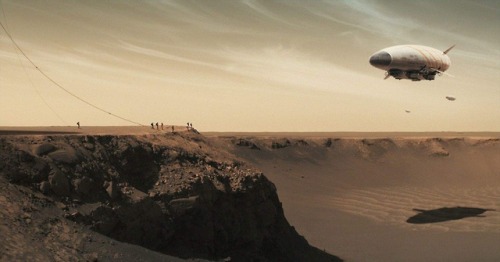
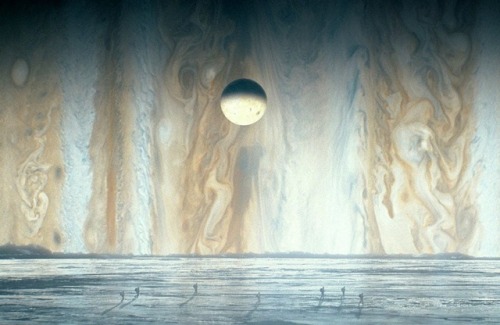

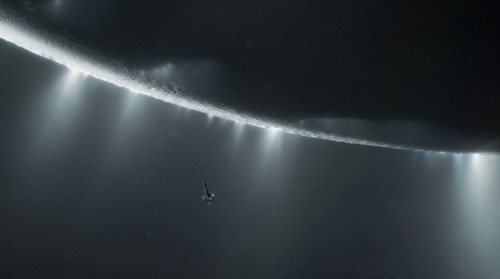
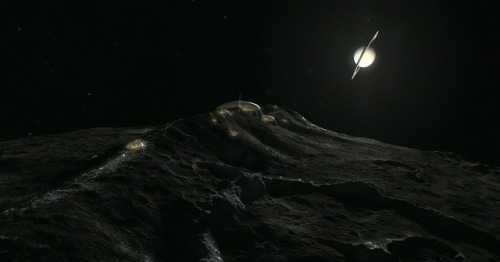
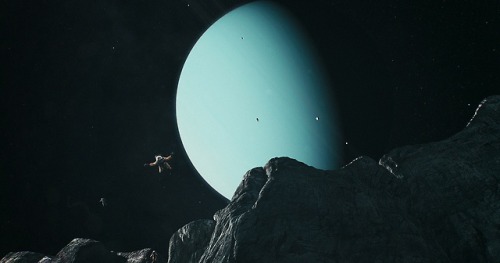


Will we one day explore the worlds of our solar system? How long will this take?
We have a diversity of worlds in our solar system. Majestic places…
Imagine being able to visit Mars and its hostile climate. Imagine being able to visit the moons of Jupiter, observe Io: the volcanic moon, Europa, the frozen moon and Ganymede a moon larger than Mercury itself and that has its own magnetic field. Imagine visiting the moons of Saturn and maybe passing close to your rings… Imagine orbiting or floating through Titan’s atmosphere and closely watching its lakes and seas of methane and liquid ethane. Imagine getting to know the geysers of Enceladus, the valleys of Tethys, and the craters of Mimas… Imagine being able to see the moons of Uranus and have a view of Verona Rupes, the largest cliff of the solar system, located in Miranda. Imagine being able to be in Triton and to be able to observe the cold and azualdo Neptune in the sky…










Ask Ethan: Why Are There Only Three Generations Of Particles?
“It is eminently possible that there are more particles out there than the Standard Model, as we know it, presently predicts. In fact, given all the components of the Universe that aren’t accounted for in the Standard Model, from dark matter to dark energy to inflation to the origin of the matter-antimatter asymmetry, it’s practically unreasonable to conclude that there aren’t additional particles.
But if the additional particles fit into the structure of the Standard Model as an additional generation, there are tremendous constraints. They could not have been created in great abundance during the early Universe. None of them can be less massive than 45.6 GeV/c^2. And they could not imprint an observable signature on the cosmic microwave background or in the abundance of the light elements.
Experimental results are the way we learn about the Universe, but the way those results fit into our most successful theoretical frameworks is how we conclude what else does and doesn’t exist in our Universe. Unless a future accelerator result surprises us tremendously, three generations is all we get: no more, no less, and nobody knows why.”
There are three generations of (fermionic) particles in the Universe. In addition to the lightest quarks (up and down), the electron and positron, and the electron neutrino and anti-neutrino, there are two extra, heavy “copies” of this structure. The charm-and-strange quarks plus the top-and-bottom quarks fill the remaining generations of quarks, while the muon and muon neutrino and anti-neutrino plus the tau and tau neutrino and anti-neutrino comprise the next generation of leptons.
Theoretically, there’s nothing demanding three and only three generations, but experiments have shown that there are no more to within absurd constraints. Here’s the full story of how we know there are only three generations.
WE NEED TO ACT NOW







The role plastic products play in the daily lives of people all over the world is interminable. We could throw statistics at you all day long (e.g. Upwards of 300 MILLION tons of plastic are consumed each year), but the impact of these numbers border on inconceivable.
For those living on the coasts, a mere walk on the beach can give anyone insight into how staggering our addiction to plastic has become as bottles, cans, bags, lids and straws (just to name a few) are ever-present. In other areas that insight is more poignant as the remains of animal carcasses can frequently be observed; the plastic debris that many of them ingested or became entangled in still visible long after their death. Sadly, an overwhelming amount of plastic pollution isn’t even visible to the human eye, with much of the pollution occurring out at sea or on a microscopic level.
The short-lived use of millions of tons of plastic is, quite simply, unsustainable and dangerous. We have only begun to see the far-reaching consequences of plastic pollution and how it affects all living things. According to a study from Plymouth University, plastic pollution affects at least 700 marine species, while some estimates suggest that at least 100 million marine mammals are killed each year from plastic pollution. Here are some of the marine species most deeply impacted by plastic pollution.
Sea Turtles
Seals and Sea Lions
Seabirds
Fish
Whales and Dolphins

–> GET HERE THE OCEAN SEA PIN <–

–> GET HERE THE A LITTLE MORE KINDNESS A LITTLE LESS JUDGEMENT PIN <–

–> GET HERE 4 PACK GALAXY FISHES PINS <–

–> GET HERE THE IT’S A SMALL WORLD AFTER ALL PIN <–

–> GET HERE THE SEA LOVERS PIN <–

–> GET HERE THE IF YOU’RE LOOKING FOR A SIGN THIS IS IT PIN <–

More than ever, the fate of the ocean is in our hands. To be good stewards and leave a thriving ocean for future generations, we need to make changes big and small wherever we are.
Every purchase supports Ocean Conservation. We give a portion of our profits to Organizations that bravely fight for Marine Conservation.

Hilarious Animal Snapchats That Are Impossible Not To Laugh At




















The Summer Solstice Has Arrived!
This year’s summer solstice for the northern hemisphere arrives at 11:54 a.m. EDT, meaning today is the longest day of the year! The number of daylight hours varies by latitude, so our headquarters in Washington, D.C. will see 14 hours, 53 minutes, and 51 seconds of daylight. A lot can happen in that time! Let’s find out more.

If you’re spending the day outside, you might be in the path of our Earth Science Satellite Fleet (ESSF)! The fleet, made up of over a dozen Earth observation satellites, will pass over the continental United States about 37 times during today’s daylight hours.

These missions collect data on atmospheric chemistry and composition, cloud cover, ocean levels, climate, ecosystem dynamics, precipitation, and glacial movement, among other things. They aim to do everything from predicting extreme weather to helping informing the public and decision makers with the environment through GPS and imaging. Today, their sensors will send back over 200 gigabytes (GB) of data back to the ground by sunset.

As the sun sets today, the International Space Station (ISS) will be completing its 10th orbit since sunrise. In that time, a little more than 1 terabyte-worth of data will be downlinked to Earth.

That number encompasses data from ground communications, payloads, experiments, and control and navigation signals for the station. Approximately 330 GB of that TB is video, including live broadcasts and downlinks with news outlets. But as recently-returned astronaut Serena Auñón-Chancellor likes to point out, there’s still room for fun. The astronauts aboard the ISS can request YouTube videos or movies for what she likes to call “family movie night.”

Astronauts aboard the station also send back images—LOTS of them. Last year, astronauts sent back an average of 66,912 images per month! During today’s long hours of daylight, we expect the crew to send back about 656 images. But with Expedition 59 astronauts David Saint-Jacques (CSA), Anne McClain (NASA), and Oleg Kononenko (RKA) hard at work preparing to return to Earth on Monday, that number might be a little less.

Say you’re feeling left out after seeing the family dinners and want to join the crew. Would you have enough daylight to travel to the ISS and back on the longest day of the year? Yes, but only if you’re speedy enough, and plan your launch just right. With the current fastest launch-to-docking time of about six hours, you could complete two-and-a-half flights to the ISS today between sunrise and sunset.

When returning from orbit, it’s a longer ordeal. After the Expedition 59 trio arrives on Earth Monday night, they’ll have to travel from Kazakhstan to Houston to begin their post-flight activities. Their journey should take about 18 hours and 30 minutes, just a few hours longer than the hours of daylight we’ll see today.

Happy solstice! Make sure to tune in with us on Monday night for live coverage of the return of Expedition 59. Until then, enjoy the longest day of the year!
Make sure to follow us on Tumblr for your regular dose of space: http://nasa.tumblr.com.
How Big is Our Galaxy, the Milky Way?
When we talk about the enormity of the cosmos, it’s easy to toss out big numbers – but far harder to wrap our minds around just how large, how far and how numerous celestial bodies like exoplanets – planets beyond our solar system – really are.
So. How big is our Milky Way Galaxy?
We use light-time to measure the vast distances of space.
It’s the distance that light travels in a specific period of time. Also: LIGHT IS FAST, nothing travels faster than light.

How far can light travel in one second? 186,000 miles. It might look even faster in metric: 300,000 kilometers in one second. See? FAST.

How far can light travel in one minute? 11,160,000 miles. We’re moving now! Light could go around the Earth a bit more than 448 times in one minute.

Speaking of Earth, how long does it take light from the Sun to reach our planet? 8.3 minutes. (It takes 43.2 minutes for sunlight to reach Jupiter, about 484 million miles away.) Light is fast, but the distances are VAST.

In an hour, light can travel 671 million miles. We’re still light-years from the nearest exoplanet, by the way. Proxima Centauri b is 4.2 light-years away. So… how far is a light-year? 5.8 TRILLION MILES.

A trip at light speed to the very edge of our solar system – the farthest reaches of the Oort Cloud, a collection of dormant comets way, WAY out there – would take about 1.87 years.
Our galaxy contains 100 to 400 billion stars and is about 100,000 light-years across!
One of the most distant exoplanets known to us in the Milky Way is Kepler-443b. Traveling at light speed, it would take 3,000 years to get there. Or 28 billion years, going 60 mph. So, you know, far.
SPACE IS BIG.

Read more here: go.nasa.gov/2FTyhgH
Make sure to follow us on Tumblr for your regular dose of space: http://nasa.tumblr.com.










(Source)
All cats are beautiful 🐱❤️






























Ten Solstice Facts That Everyone Should Know
“9.) The solstices are neither the hottest nor coldest days of the year. This one is actually very specific to Earth: the hottest times of the year typically correspond to approximately 6 weeks after the summer solstice, and approximately 6 weeks after the winter solstice. Other planets don’t have this same phenomenon for one very important reason: they don’t have the majority of their surfaces covered in liquid water.
The oceans themselves, being composed of large quantities of water and containing approximately 1,000 times the mass of Earth’s atmospheres, contain a tremendous amount of heat, and are slow to change their temperatures. We might receive more (or less) energy from the Sun on the summer (or winter) solstices, but the oceans require time to heat up or cool down. Global average temperature extremes, therefore, usually occur in early August and February, rather than at the June and December solstices.”
The solstice, Latin for the Sun standing still in the sky, occurs whenever the Earth’s axial tilt reaches a maximum relative to the Earth’s orbital plane around the Sun. With a tilt of 23.5 degrees, but a tilt that’s independent of our elliptical orbit around the Sun, many surprising and counterintuitive facts arise.
Want to know as many of them as possible? Come get this remarkable and fascinating list of educational facts on this year’s solstice: June 21, 2019!
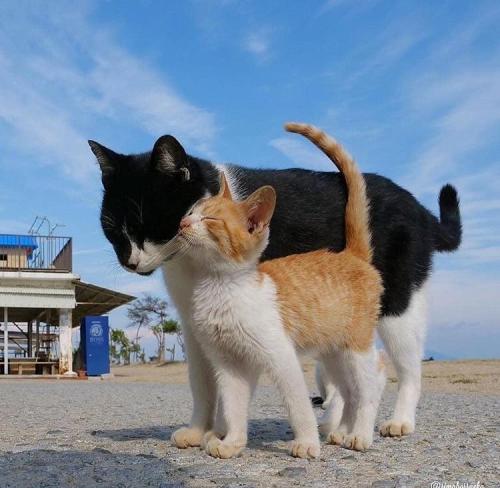









(Source)
-
 davvero-annoiatx liked this · 1 year ago
davvero-annoiatx liked this · 1 year ago -
 sometimes-ap-writes reblogged this · 3 years ago
sometimes-ap-writes reblogged this · 3 years ago -
 melaninoutspoken liked this · 4 years ago
melaninoutspoken liked this · 4 years ago -
 ellagenetics liked this · 4 years ago
ellagenetics liked this · 4 years ago -
 hurricanelistmaker liked this · 4 years ago
hurricanelistmaker liked this · 4 years ago -
 aceyanaheim liked this · 4 years ago
aceyanaheim liked this · 4 years ago -
 geograficidades liked this · 4 years ago
geograficidades liked this · 4 years ago -
 mio-xiao liked this · 5 years ago
mio-xiao liked this · 5 years ago -
 powerangerosa liked this · 5 years ago
powerangerosa liked this · 5 years ago -
 thnks-fr-th-samulet liked this · 5 years ago
thnks-fr-th-samulet liked this · 5 years ago -
 running-with-bad-skeleton-hats reblogged this · 5 years ago
running-with-bad-skeleton-hats reblogged this · 5 years ago -
 g-bilesbilinski liked this · 5 years ago
g-bilesbilinski liked this · 5 years ago -
 stewacai liked this · 5 years ago
stewacai liked this · 5 years ago -
 lullaby-blind reblogged this · 5 years ago
lullaby-blind reblogged this · 5 years ago -
 annoyinglyeclecticruins reblogged this · 5 years ago
annoyinglyeclecticruins reblogged this · 5 years ago -
 annoyinglyeclecticruins liked this · 5 years ago
annoyinglyeclecticruins liked this · 5 years ago -
 kumfartbubblz reblogged this · 5 years ago
kumfartbubblz reblogged this · 5 years ago -
 verner2 reblogged this · 5 years ago
verner2 reblogged this · 5 years ago -
 sufferuntome8 liked this · 5 years ago
sufferuntome8 liked this · 5 years ago -
 ladyluck25 reblogged this · 5 years ago
ladyluck25 reblogged this · 5 years ago -
 sinnenicht reblogged this · 5 years ago
sinnenicht reblogged this · 5 years ago -
 frankar76 liked this · 5 years ago
frankar76 liked this · 5 years ago -
 kittyluver19 liked this · 5 years ago
kittyluver19 liked this · 5 years ago -
 maj0rmin3r1 reblogged this · 5 years ago
maj0rmin3r1 reblogged this · 5 years ago -
 sizzlingdragonwhispers reblogged this · 5 years ago
sizzlingdragonwhispers reblogged this · 5 years ago -
 nomyalfadeel-blog liked this · 5 years ago
nomyalfadeel-blog liked this · 5 years ago -
 maybeitsmangoes liked this · 5 years ago
maybeitsmangoes liked this · 5 years ago -
 ishallcallyousquishy liked this · 5 years ago
ishallcallyousquishy liked this · 5 years ago -
 pinkiepieaddict reblogged this · 5 years ago
pinkiepieaddict reblogged this · 5 years ago -
 universallyatrest liked this · 5 years ago
universallyatrest liked this · 5 years ago